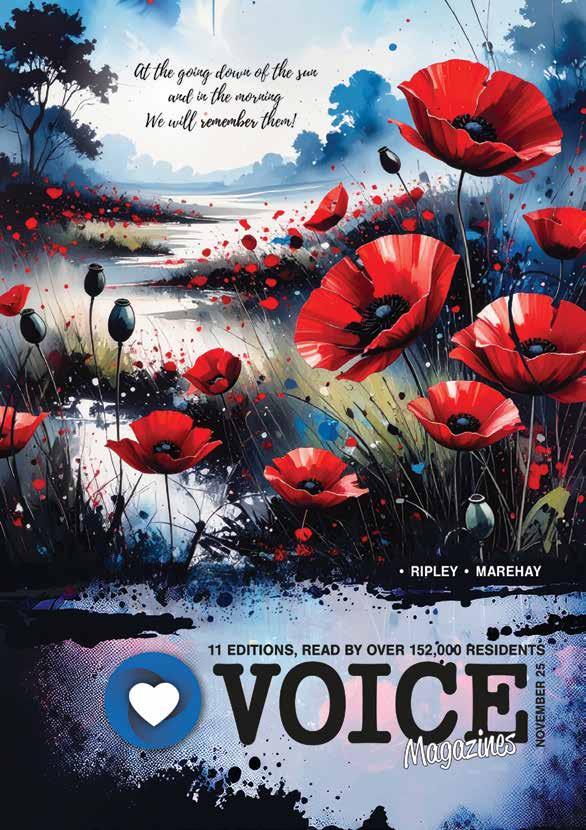
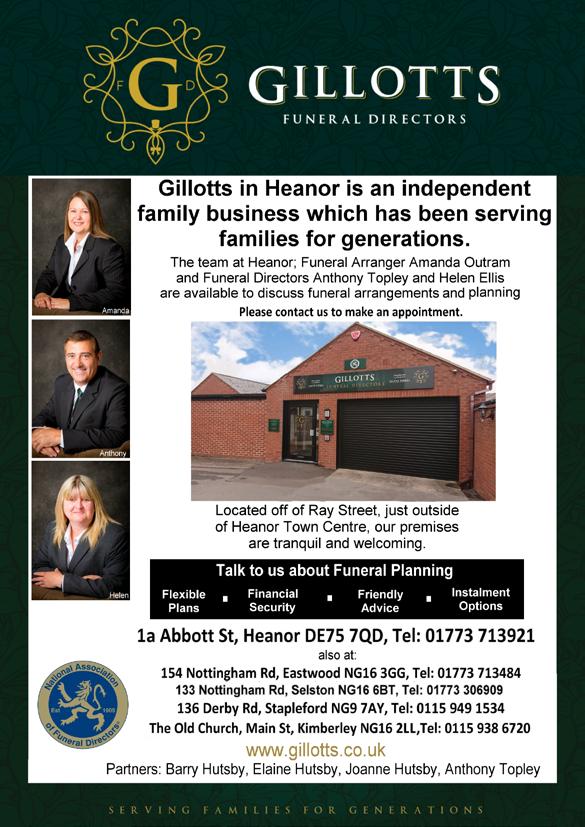



This month the team and I really wanted to focus on Remembrance Day. The local heritage groups across all the mags have been exceptional with their kindness and generosity in supporting us with local stories of war veterans and their historical articles, we are grateful to them as always. We also have a local poet in our midst, who has come to poetry later in life and sent us one of his poems regarding the fallen.
Our intention is not to be macabre this month but rather to highlight where we have come from as a nation and take a moment to give thanks to all those who gave their tomorrow for our today. One of the interesting facts that we found when we were researching was that commemorations around Remembrance Day were not always as well observed, with interest amongst the general public fading over the post war years. Indeed, it was the 50th anniversary celebrations around D-Day in 1994 and of VE and VJ Day in 1995 that reinvigorated interest in the wars and a desire to commemorate the sacrifices made. Following this the Royal British Legion and other organisations pushed for a renewed observation of the 2 minutes silence on 11th November. That isn’t to say it wasn’t observed locally in some cases and obviously was carried out at the cenotaph but it still surprised me that it wasn’t always an important part of our countries commemoration. Just goes to show that everyday is a school day!
Here at Voice HQ, as soon as the November mag goes out, we begin feverishly trying to get our Christmas edition into place. I can’t tell
a lie, despite it arriving at precisely the same time each year, it genuinely does feel like it has sneaked upon us (again) this year! As last year though, we have some wonderful prizes donated by ourselves and our generous advertisers and supporters which will be up for grabs, so please keep a look out for that edition – as I always say, you’ve got to be in it to win it!!
On that note, if you want to give your business one last push for 2025, don’t delay and get in touch today! We still have space and I must say our Christmas editions have traditionally been one of my favourites! We always try to do something special and this year will be no different!
Happy Reading,
Emily x
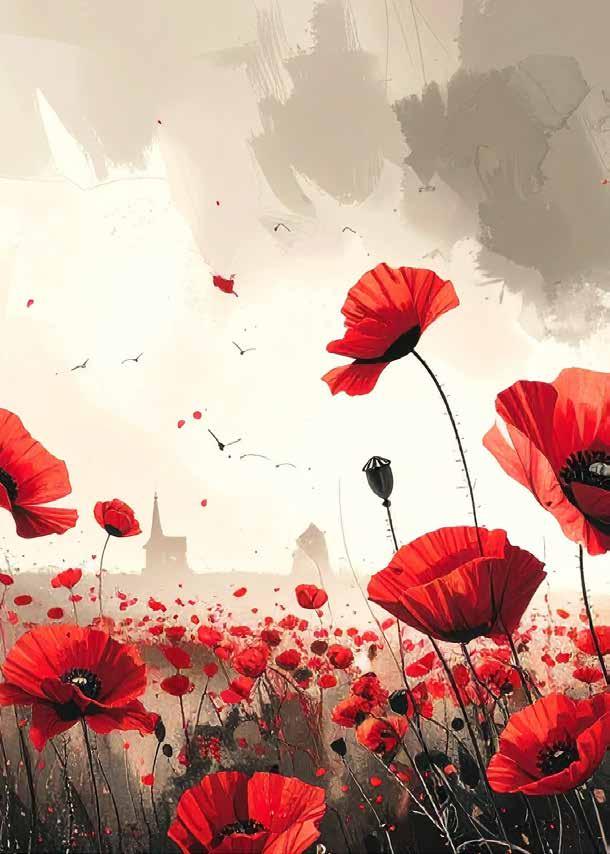

Each year in November, communities across the country pause to reflect, to honour, and to remember. Remembrance is more than a tradition; it is a deeply rooted moment of gratitude and reflection for those who have served, and continue to serve, in our Armed Forces.
From the battlefields of the First World War to the conflicts of today, men and women have stood in defence of our freedoms, often at great personal cost. They have faced danger, endured hardship, and in too many cases, given their lives so that others might live in peace. Their courage and sacrifice form part of the very fabric of our nation’s story.
As we gather at memorials, wear our poppies, or simply take a moment of silence in our daily lives, we join together in unity to say thank you. Thank you to those who have gone before us, and thank you to those who still serve today, at home and overseas.
The words of the traditional Ode of Remembrance, taken from Laurence Binyon’s poem For the Fallen, continue to resonate with us all:
“They shall grow not old, as we that are left grow old; Age shall not weary them, nor the years condemn. At the going down of the sun and in the morning, We will remember them.”
These lines remind us that remembrance is not confined to one day in November but carried in our hearts always. Each name etched on a memorial, each wreath laid, and each moment of silence speaks of a nation’s enduring gratitude.
As we bow our heads this Remembrance Day, we acknowledge the debt we can never repay but must always remember. Their service, their sacrifice, and their unwavering commitment to duty remind us of the true cost of freedom.
WE WILL REMEMBER THEM.
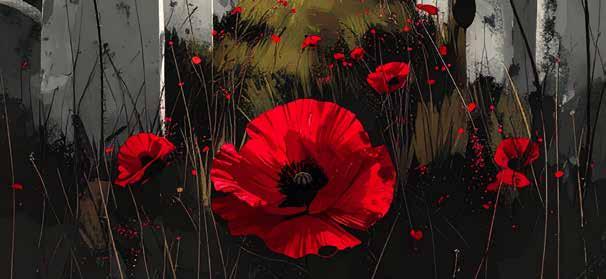

Amber Valley Men - The men’s team are showing great progress, improving every game. It’s been brilliant to see new players joining the squad and keeping training lively on Tuesday and Thursday evenings. The effort, spirit, and banter are all top-notch – bring on the next fixture! Amber Valley Women - The ladies have had a tough start to the season, but the mood is positive and the numbers at training are fantastic – slow and steady wins the race, after all! The team is building momentum and ready to make their mark going forward. Big congratulations to Karen, our longest-serving women’s player, and to long-standing men’s player Scott Morgan, who’ve just tied the knot – proof that love really does conquer all, even rugby training nights!
Minis & Juniors - It’s been a brilliant start across all our junior age groups, with plenty of energy, smiles, and mud flying about! The U10s are thriving after a summer of rebuilding and had an impressive 14 players out this weekend. The U9s are on the lookout for new recruits to join the fun, while the brand-new U7s have made an amazing start under the guidance of ex–first team coach Chris Locke. The U9s even had their first-ever home contact match, complete with a pre-match team talk – and every player got stuck in, with no one shying away from their tackles!
So whether you’re mini, mighty, or somewhere in between, there’s always room for you at Amber Valley — and the clubhouse fridge is always stocked for a post-training pint!





Interested in giving rugby a try? call Stuart 07966 867 946 for the men, Gareth 07595 520 537 for the ladies and Paul 07790 403 043 for the Minis and Juniors.
More than just a club, we are the #ValleyFamily. You can visit our website www.ambervalleyrfc.co.uk,
pages to contact us or follow what we do. You can find us at Lower Somercotes, Somercotes,
















































Born on 17th August 1921, Clifford Hawkins of 580 Pilsley Road, Morton, enlisted in the RAF Volunteer Reserve in December 1940. After training in Blackpool and Wiltshire, he joined 769 Home Defence Squadron, later posted overseas to Singapore. Their arrival coincided with the fall of Singapore, forcing evacuation to Java, where Clifford was captured by the Japanese at Tasik Malaja on 8th March 1943.
He was taken to Kuching, then to Sandakan, Borneo, where prisoners were forced to build an airfield under appalling conditions. The camp commandant, Captain Hoshijima Susumi, was later executed for war crimes including starvation, torture, and neglect of prisoners.
In 1945, as Allied forces advanced, the Japanese forced prisoners on the infamous Sandakan death marches. Those too weak to march, including Clifford, were left behind when the camp was burned. He died there on 15th June 1945, aged 24, officially of gastroenteritis. Clifford has no known grave and is remembered on the Singapore Memorial. Of 3,200 prisoners held at Sandakan, only six Australians survived.




































If you can’t make it into the store, we can offer a FREE home selection service, where we bring the store to you.

Mon - Wed: 9am - 5pm • Thurs: 9am - 7pm Fri: 9am - 5pm • Saturday: 9am - 5pm Sunday: 11am - 3pm
Our South Normanton Store Unit 34, Market Street, South Normanton, DE55 2EL


Our beds are the only approved trading standards manufactory in the UK.
All beds carry a 5yrs Warranty. Lots of choice of mattresses, Storage Bases & Head Board also Electric beds.
Delivery service available with old bed removal.

Durabed are the only company in the UK that is trading standards approved & a member of the National Bed Federation We are Stockists of
Our Heanor Store Unit 2, Sawmills Industrial Estate, Longbridge Lane, Heanor, DE75 7GH 01773 462 826 01773 462 461
Lots of people do fantastic things in their lives but very often they go unrecognised. Derbyshire’s Lord Lieutenant asks, ‘can we change things in Derbyshire?’ They may be doing amazing voluntary work in the community, working tirelessly to safeguard the environment, creating lots of employment in a local company, achieving incredible sporting triumphs or helping people face and overcome health problems.

The aim of the King’s Birthday and New Year Honours is to celebrate all these selfless types of activity. Anyone can be nominated for an Honour at any time.
Elizabeth Fothergill Lord Lieutenant
All you need to do is fill out the nomination form, gather evidence of the impact of the person’s activities and get letters of support from people who know them or have benefitted from their activities.
Why not have a go at a nomination. You might help the person get the recognition they deserve and it will give you a warm glow in doing so!

More information is available at www.gov.uk/honours. and the Derbyshire Lord Lieutenant’s Honours Panel is here to help as well. They can be contacted by emailing Debra.Heaton - Lieutenancy@derbyshiredales.gov.uk
Method:
1. Spray a non-stick saucepan with low-calorie cooking spray and put it over a medium heat. Add the onion, pepper and garlic and cook for 5 minutes, or until softened.
2. Stir the tomatoes and oregano into the mixture, and simmer for 15 minutes.
3. Meanwhile, cook the pasta according to pack instructions, and heat your oven to 200°C/fan 180°C/ gas 6.
For more information visit www.slimmingworld.co.uk

Autumn and pasta bakes go together like... well... pizza and pasta! Which makes this the perfect combo. Enjoy!
4. When the pasta’s cooked, drain and stir it through the tomato sauce. Spoon the mixture into a shallow ovenproof dish and top evenly with the pepperoni and mozzarella. Bake for 1520 minutes, or until bubbling and golden.
5. Divide between 4 plates, and serve with the salad or Speed veg.

• Low-calorie cooking spray
• 1 onion, finely chopped
• 1 red pepper, deseeded and diced
• 2 garlic cloves, crushed
• 2 x 400g cans chopped tomatoes
• 2 tsp dried oregano
Serves: 4 Syns per serving: 8
• 300g dried pasta shapes
• 50g pepperoni slices
• 200g mozzarella, roughly torn
• Salad or your favourite Speed vegetables, to serve
Ready in: 50mins












Free temporary vertical blinds with any shutter order X3 Verticals fitted from £90 • X3 Rollers fitted from £120 (Size and fabric restrictions apply)
Direct Factory Blinds is the name you can rely on for made-to-measure
Free Call Ripley - 0808 155 8256 dfblinds@hotmail.co.uk • www.directfactoryblinds.co.uk
Fill in all the numbers!
This is a sudoku 1 square grid
81 cells
9 3x3 blocks
1 simple rule:
Use all the numbers 1-9, with no duplicates allowed, in any row, column, or block. These puzzles are devised by the
















Sometimes in life we have all followed roads filled with dirt.
Paths filled with sorrow, with great pain, great sacrifice and hurt.
What i would say if those that have past didn’t follow these paths, would we be facing such an untold wrath?
More often than not, these paths create a sense of freedom and humanity, for a society to be free against those who don’t stand for democracy.
But against those that only stand for pain, suffering and untold tyranny.
The hard road of sorrow and pain most often creates the humble, strong, and the oh so brave.
For those are the ones, who shall not ever forgotten, nor betrayed.
They fight for our liberty, for our freedom to be saved.
They fight for country, kings and queens and for all of the beautiful things that freedom brings.
With this In mind, don’t ever be ashamed to say what dark path you walked upon, when you walked that hard road to our freedom.
For this is the place that you defended.
Our home, our place our proud foundation. A place if you look, that you will find a great proud nation.
A place we are all so grateful that you chose to defend, even until the bitter end.
A place of great beauty and such wisdom.
Our great, beloved United Kingdom.
BY PAUL BOOTH, ALFRETON - COMWONDER@GMAIL.COM







































Mental Elf is a timed 10k, 5K and Family Fun Run at Elvaston Castle, Derbyshire

What better way to kick off the festive season than to don an elf costume and raise money for your local Mental Health charity, Derbyshire Mind?
We will be running several competitions on the day including "Best Dressed Elf" and "Best Dressed Santa's Little Helper" otherwise known as Pet.
10k Timed Race Start: 10.00am 5k Family Fun Run & Timed Race starts 11.00am
Festive Elvish fancy dress is encouraged! 30th November 2025
Elvaston Castle and Country Park, Borrowash Road, Elvaston DE72 3EP
www.derbyshiremind.org.uk/mental-elf-2025/?utm


This classic ramble takes us back to March 2017. We begin and end near Portland Country Park, which just so happens to have a dog friendly visitors centre. Perfect for a cuppa after a good walk, and maybe a snozzage for your pup! Just check the opening times to avoid disappointment. The walk itself is lovely with a nice range of scenery, including some beautiful views. A special thanks for Michelle and Dean for refreshing the walk and keeping us all on track!
A steady walk for you and your dog, which should take around 1½ hours to complete. There is a range of terrains and a couple of steep inclines, along with the seasonal mud and puddles so make sure you wear appropriate footwear. There are also a couple of sections of road, so please take plenty of care and as always, follow the countryside code.





START: Portland Country Park, Lindley’s Lane, Kirkby in Ashfield. NG17 9AL. Access to the car park is best down Lindley Lane, which can be reached from the B6020 in Kirkbyin-Ashfield town centre

1. Standing with your back to the car park entrance, continue straight ahead, along a well laid footpath, passing a signboard on your left.


2. Continue straight ahead until the path passes into some trees, bends around to the left, and then to a T junction of footpaths. At this point turn right and continue along a footpath with a steep drop to your left.



3. A little further on, the path begins to descend. At the bottom of the hill you will reach a T junction of paths with a metal fence, and railway line directly in front of you. Turn right to continue along a footpath, keeping a metal fence and railway line on your left.
4. Continue along this path for some distance, ignoring any paths leading off. Eventually the path bears slightly to the right and away from the railway line. Continue straight ahead until reaching a T junction of paths. At the T junction turn left, climb up some steps, and cross over a railway bridge.

5. As you climb down the steps from the bridge, continue straight ahead, ignoring the path on the right. Continue straight ahead for some distance until passing through a metal width restrictor. Continue straight ahead staying close to some trees on your right.
6. Continue straight ahead until passing through a gap in a fence. After, ignore a path to the left, and continue straight ahead with a fence on both sides.
7. Continue until you reach a cream coloured house on your left. At this point, keep right and begin to climb gently. Follow the path into a field, and now continue to climb with a hedge on you left.
8. After a short distance, turn right, pass close by a pylon on your left, and continue to cross an open field. Continue straight ahead until passing a grave yard on your left. After, continue straight ahead to pass by a metal gate and into a church yard.
9. Continue along a path and pass the church on your right. Pass through a wooden gate, out of the church yard, and onto a road. Turn left along the road, and begin to head downhill.
10. Continue along the road for some distance. After passing a bus stop on your right, and just prior to a bus stop on your left, turn left along ‘Laburnum Avenue’.
11. Continue along ‘Laburnum Avenue’ until the road bends sharp around to the right. At this point, continue straight ahead along a road for a short distance, and then continue as the road turns into a lane.
12. A very short distance along the lane, bear slightly left to continue along the lane with a wall on your right and a fence on your left. Upon reaching a metal gate directly in front of you, bear slightly left again to continue along a footpath with a fence on both sides.
13. After a very short distance the path splits in two. Take the right hand split and continue with the fence on your right. Continue for some distance and after passing a ‘managing grasslands’ info board on your left continue straight along the path until reaching a wooden post on the right-hand side. Turn right immediately after the post through the hedge heading downhill across the field.
14. At the bottom of the hill cross over a wooden footbridge, pass through a gate, and then continue uphill to cross another field.
15. At the top of the hill, pass through a metal gate, cross over a railway line, and then pass through another metal gate. Continue straight ahead along a tarmac footpath. After a short distance pass by a sign board on your left, and begin to gently climb uphill.
16. Continue straight ahead for some distance until passing ‘Portland Country Park Visitor Centre’ on your left. The tarmac footpath now turns into a single track road.
17. Continue straight along the road, after a short distance the road bends to the left continue past the Portland Country Park Visitors Centre sign. Turn left around the bend back into the car park at the starting point.

This walk is for illustrative purposes only. Voice Magazines Ltd takes no responsibility for anyone who chooses to follow this route and encourages all walkers to obey all byelaws and signs and to respect the area they are walking in, ensuring they pick up all dog mess and obey the countryside code at all times.





















For a short period after the First World War, there was a fashion for excursion trips using a charabanc (literally a carriage with benches).
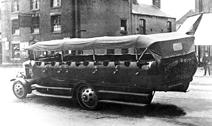
Ripley was no exception, and there are pictures of warmly dressed holidaymakers crammed into open-topped vehicles leaving from the Market Place. They needed to be warmly dressed and well padded: the vehicles had wheels with solid tyres and no suspension, and protection from the weather was limited to a leaky canvas cover which had to be pulled over their heads.
To travel any distance on early 1920s roads can’t have been very comfortable, though being crushed up against your neighbour probably absorbed some of the bumps.

The most well known of Ripley’s vehicles were the “Bluebird” and the “Raven”, run by Arthur Raven, and kept in a wooden shed at the back of the Thorn Tree Inn. They were probably used only in the summer: the passenger deck of many charabancs could be removed and a freight deck fitted for winter use, so that the vehicle didn’t remain idle.
It is interesting that many of the passengers in the photographs are women: the excursions may have been seen as more respectable than travelling on the trams, which were often full of rowdy colliers.
Arthur Raven was born in Somercotes and trained as a joiner, but later became a motor mechanic. He married a teenage bride, Phoebe, in 1915, but by 1920 was taking the unusual step of publishing a notice in the newspaper stating that he would not be responsible for her debts.
After running the charabancs in the early 1920s, he and his wife moved to Kent where he was listed as an electrical engineer in 1939.
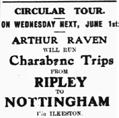
For Ripley, it was the end of the brief summer of the charabancs, soon to be replaced by the much more comfortable motor coaches.




Pitcherwits® are crossword puzzles where some of the clues are in pictures. Sound easy? It’s not called “Pit-your-wits” for nothing! The mixture of cryptic and picture clues, combined with Professor Rebus’ unique sense of humour, will keep you entertained for hours.
Across
9 Seep out from menagerie sent back to the Orient (4)
10 It marks the spot in beer for holding wheels (4)
11 Mate’s attempts at vapour (5)
12 Fortunately it’s a bit of fish? (4)
13 Feline with legless plumage (4)
Down
2 Grimacing slightly at the coat (3)
3 It’s rubbish going up the hill (3)
7 Prude is taken aback and is speechless (5,2)
14 Moose spotted in Selkirk (3)
15 Indefatigably, it’s a bit of a gift, talking (3)
Mirth at the Hubble telescope is a low start (6,5)
Behaviour in front of an orchestra? (7)


Sad, lone pig running away (7)
Blake to mutate and have a fall (4,1,6)



Grasp firmly that it could be a hot old night (4,2,5)








Kate Atkinson’s new novel, Death at the Sign of the Rook, is good fun; the perfect book antidote to the autumn blues. It keeps you on your toes mentally, has some brilliant characters and is a smart and knowing detective story which gives you the clever chills and some proper funny moments.
We’re back in Jackson Brodie country, the grumpy detective hero of some of her earlier books. Now a private detective almost dying of boredom in his search for a stolen painting he arrives at Rook Hall, which seems like the setting for the perfect murder mystery – in fact it’s a hotel where they put on murder mysteries weekends to entertain the guests.
So we have all the Agatha Christie favourites, the butler, the policeman, the vicar. Kate Atkinson may have quite a bit of fun with the classic Cluedo idea but the story soon spirals off into a real murder and a blizzard – literally - of loose ends and diversions.
It’s a lark, but one where you need the little grey cells on high alert and as with all her books the characters are at the heart of things. And again, as always, the book entertains us with thoughts on politics, TV, violence – you name it. You won’t be bored.


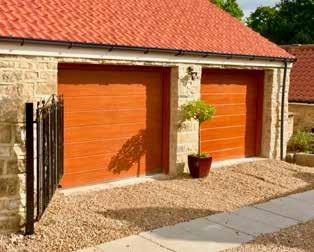


















Before the outbreak of the Second World War in 1939, Winnie was living in the shadow of the great cathedral in the service of Canon Carnegie, Dean of Westminster. The Canon’s wife being a sister to Neville Chamberlain of the Munich agreement fame; indeed, Winnie came into contact with many politicians and hierarchy of the period.
A further position secured by Winnie was in the Hyde Park household of the Honourable Mrs. Beckett, Auntie to Sir Anthony Eden and the eccentric racehorse owner, Dorothy Paget. This must surely have been the ultimate in London’s high society at this time.
In 1937 Winnie was recommended, at a wage of £45.00 per annum, to a position at Clarence House with the Queen Mum’s brother, the Duke of Connaught, but for whatever reason the position was not accepted.
Wartime Britain interrupted Winnie’s high society service, and despite the advice to come back home, she volunteered for war work being sent to the College of Domestic Subjects. Undaunted by Herr Hitler’s attempts to blow her up, Winnie continued her efforts in hospitals at Camberwell and Bethnal Green. Both of these institutions were destroyed by German bombs resulting in a horrific number of casualties. There was an occasion once where Winnie became fascinated by a passing rocket and had to be hustled into a nearby shelter at Victoria Station. On returning home once, Winnie was to say, “Bombs are one thing, you hear them coming, but doodlebugs are something else.”
Sometime after the cessation of hostilities, Winnie returned to her first love, London. Her final working years, and indeed some of her happiest come from the mid 1950’s until her retirement in1972. She became a Housekeeper
in luxury flats overlooking the Cenotaph were occupants included, Irene Handel, Barbara Cartland and Wilfred Hyde-White (good with tips apparently) plus many high-ranking military gentlemen including Group Captain Peter Townsend and General Broomhall, the latter becoming famous for his impersonation of a German General when he attempted walk out of a POW camp.
Mistakenly, in Winnie’s mind, she returned back to Sutton-in-Ashfield and the inevitable Council flat existing on her many memories. Her latter years sadly became fraught with ill-health, blindness, deafness and increasingly frail needing much medical attention. Never giving up or changing her life-style Winnie never wanted to be considered a burden. Eventually terminally ill, a nasty fall saw her into hospital with no strength to fight her final battle, sadly she succumbed into rest on November 17th, 2001. Her ashes placed in the form of a cross at the site of her brother Jim who was laid to rest in 1968.
Malcolm Bryan ended his article by saying, “Remembering Auntie Winnie brings to mind the number of times she allowed me to stay with her in London on my nefarious escapades, always a hot meal to hand. “Her love of any get togethers, and parties at Christmas where she was an enthusiastic card player and of her generosity to all her family.”
The following words from a card sent by sister Marion seem appropriate. No matter where our paths may wind. Those days left behind are with us. In our hearts and minds We remember you. The End.
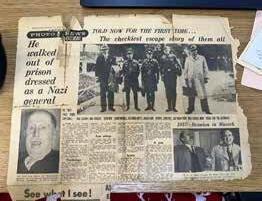

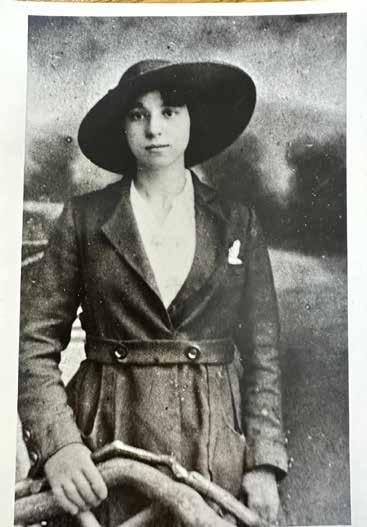






As a child I spent a lot of time with my grandparents. They lived two streets away and my mum was busy with the twins, so it was my home from home.
In my grandparents’ bedroom, as well as a piddle pot there was a small, wooden table next to his pillow which, among other things, held an ashtray with a half-smoked woodbine and box of England’s Glory matches. Smoking in bed was not unheard of, nor was the bottle of bronchial mixture for his persistent cough set next to it. His dentures were in a glass of steradent close by.
There was no lamp because the light could be turned on and off by pulling the string which hung from the ceiling.
What he did have was a folding travel alarm clock which is what sparked this memory. Today, we performed a session called “My dad had one of these” and one of our latest acquisitions proved very popular and recognisable. It was one of these clocks. They were so popular in many homes and could be taken on holiday.



This clock woke him for the early shift at Ley’s foundry until he retired with a gold watch. He only lasted for three years after retirement but the memories of a kind, loving grandfather endure.
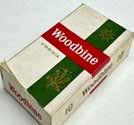


and Paul Barrass are
Find us on or email: oldfield512@btinternet.com








In 1927, a coal director painted a rosy picture of Derbyshire’s miners and their communities. But behind the polished words, everyday life told a very different story. Here, the “official view” is set side by side with the miners’ reality.
Much of Derbyshire’s wealth once depended upon its mineral deposits – lead, iron ore, limestone and coal. As industry grew, rural villages expanded into mining communities. Rows of terraced “two up, two down” houses were built to accommodate the workforce.
Before pithead baths, miners came home in their “pit dirt” to houses without bathrooms or a constant supply of hot water.
In 1927, a director of one of the larger coal combines contributed to Aberconway’s Basic Industries of Great Britain, portraying mine owners as generous providers. Yet the reality remembered by miners was often very different.
“The Derbyshire miners as a whole may be said to be thrifty” (in truth, wages after the 1926 General Strike were barely above poverty, with pits often on short-time work).
“They are careful of their personal appearance and that of their families” (many children missed school simply because they had no shoes).
“Their homes are often models of neatness” (hire purchase was avoided work was too uncertain to risk debt).
“They believe in sick and benefit clubs, and many belong to several” (before 1948, with no NHS or welfare, illness meant potential destitution).
“Perhaps 15% of the men own their own houses, but colliery owners build cottages for their workers, leaving less scope for building societies” (owners profited from rents, stopped directly from wages, so they had no interest in encouraging home ownership).
“Great numbers of new houses of a very good modern type have been built, fitted with electricity, baths, drainage and hot water” (many miners recall no bathrooms or electricity in colliery houses until the 1950s).
“Sports such as rabbit coursing attract some miners” (grouse and horses were out of reach-rabbiting was affordable), “while gardening is popular with others. Some pit-boys even take university degrees” (a rarity, though boasted about at the time).
“On the other hand, gambling is rife among men and women alike” (a quick sixpence bet at the bookies, the working man’s alternative to the stock market).
“Many take seaside trips” (paid holidays only arrived in 1938).
“Probably 25% attend a place of worship, most being Dissenters” (“Nowt wrong with Chapel,” as miners said, though most weren’t regular attenders).
“Colliery owners have also provided clubs and institutes, where men can play billiards, read papers, hold union meetings and enjoy cheap refreshment without relying on the pub” (these Miners’ Welfares were actually funded by a levy on coal sales, paid by miners and customers, not owners).
“Situated in the countryside, the men enjoy the best conditions of housing, wages and steady work” (a very rosy view—many villages only saw real improvements decades later).
So, there it was: “Doff yer caps and be grateful. Thank you Guv’nor! See you at Chapel on Sunday, then maybe a bout of intellectual improvement in the Welfare?”
With the pits long gone, many villages became dormitory towns, their cheap housing attracting newcomers from the South. A new chant arose:
“Eye by gum, it’s grand up North, Come on now, join the rush!
’Cos now we’ve got electric lights, And toilets you can flush.”
– Anon, Modern Folk Ode
Written by Ivan BRENTNALL
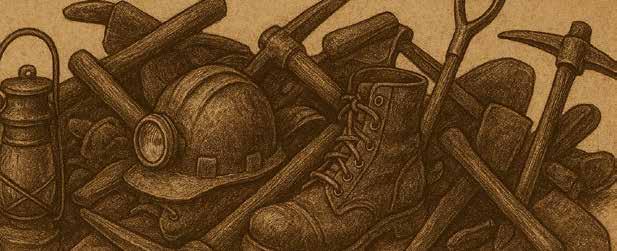
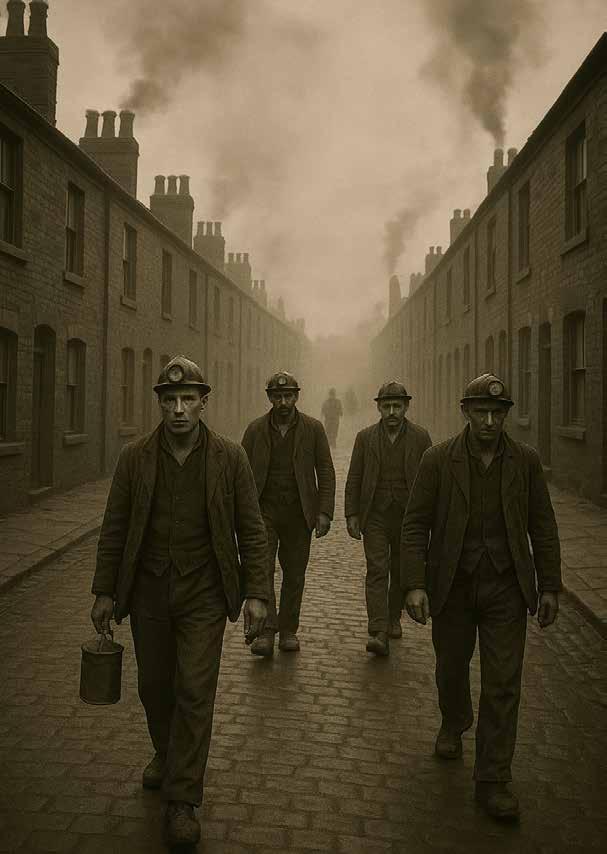
















































All types of
and reclaimed paving
Yorkstone, Sandstone, Indian sandstone, Porcelain. We also stock; Building Stone, Walling Stone, Setts, Coping, Bricks, Sealers, Jointing, Heads & Cills, Kerbs, Reclaimed Sleepers and much more…

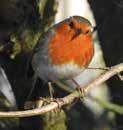
As autumn and winter blend together, the region’s gardens provide habitat and sustenance for local Robins. After a hectic breeding season, these highly territorial birds are quiet during late July and August but begin singing again in early September. At this time of year, the song is subtly different from the breeding season singing. The change is hard to define but perhaps less tuneful and slightly harsher. It is also delivered by both males and females which hold separate and independent territories. Territory size and quality are vital to Robins as the chosen area must provide food in the form of insects and other small invertebrates sufficient to support the individual in possession. The boundaries between adjacent territories are lines invisible to our eyes but discernible to the birds, so that dominance and subservience generally change as the birds move from their patch and into the neighbour’s. However, if one bird intrudes into the adjacent territory but doesn’t follow protocol, in other words makes displays of dominance, then a fight may result. Indeed, territorial Robins may battle to the death and be so preoccupied with the conflict that they can be picked up whilst still engaged.
The trigger for their aggressive behaviour is the bright red breast which leads to response for the birds, especially during the breeding season. When hyped up, a Robin will even attack with a degree of vigour, a tennis ball marked with a red circle! Garden mirrors can also play havoc with this territorial behaviour for both Robins and Dunnocks, and this is because the mirrorimage sees an aggressive intruder. Moreover, the response from the reflection is increasingly provocative the more irate the owner of the home-patch. So, the more excited and combative the intruder then the more energetic the reaction and the process goes on.
Despite the high octane behaviour of our garden Robins, this contrasts with their interactions with us, where they are the gardener’s friend. Particularly if offered dried mealworms or calci worms then the local Robin will approach and
follow the gardener around the plot. Making a pursing noise with your lips whilst putting food out helps train the Robin to know what you are doing. Association of the sound with food availability will soon be learned, and furthermore this understanding and expectation can be passed down to the next generation during the summer months. Such behaviour develops from Robins following the gardener at work in the garden when they are watching for insects and worms being disturbed. This probably evolved from the birds simply following large herbivores blundering through the ancient forest!


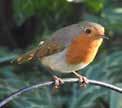




Professor Ian D. Rotherham, researcher, writer, broadcaster on wildlife and environmental issues is contactable on ianonthewildside@ukeconet.org. Follow his website www.ukeconet.org, blog www.ianswalkonthewildside.wordpress.com/ & Twitter @IanThewildside Bluesky @ianthewildside.bsky.social














3.9m x 225mm x 38mm




SALE WAS £16 NOW £14!
Ideal for: Planters Tables Rustic furniture
Decking
Shelves
Man cave
Fencing
Specialist garden maintenance and landscaping services in Derbyshire and surrounding areas

Raised beds
PROMPT DELIVERY
Contact Kevin at KS Timber on 07919 273 909

Independent, family-owned business




Multiple 5* customer reviews
Trust and satisfaction guaranteed
Professional qualifications
Book your free garden consultation now
T: 01773 317 432
E: info@lazydaysgardeningservices.com www.lazydaysgardeningservices.com
Hopefully the sunny summer has given us good crops from our fruit bushes, and now is a good opportunity to prune them back. This applies to blackcurrants, blueberries and gooseberries. Take out old wood and keep healthy looking young shoots and branches. Cut above a bud with a sloping cut so that water runs away from the wound.
November is also probably the prime time for tulip and other spring bulb planting, although you can go into early December. Twice as deep as the height of the bulb is the minimum rule, although you can go deeper with tulips and quite a bit deeper with the likes of fritillaries and anemones. If you haven’t got your daffs and narcissus in yet, do it now. They mostly don’t like late autumn planting.
Last grass cut should be around now before the frosts set in. Do it on a higher cut and on a dry day and don’t leave clippings on the grass. Earlier in the year they can provide nutrients but this time of year they’re likely to matt and block air and light from the roots.
It’s always tempting, once you’ve got the secateurs in your hand, to remove all this year’s dead growth from perennials, but if you do have some with good seed heads like teasels it’s a nice thought to leave some for the seed-eating birds over winter. And they can look interesting in a bare winter landscape.


Boiler Breakdowns
Boiler Servicing
Radiators & Pipes
Tanks & Cylinders
Toilets & Taps
Leaks & Bursts
Showers
Clearing Blockages
Pipework Replacement
Gas

















































